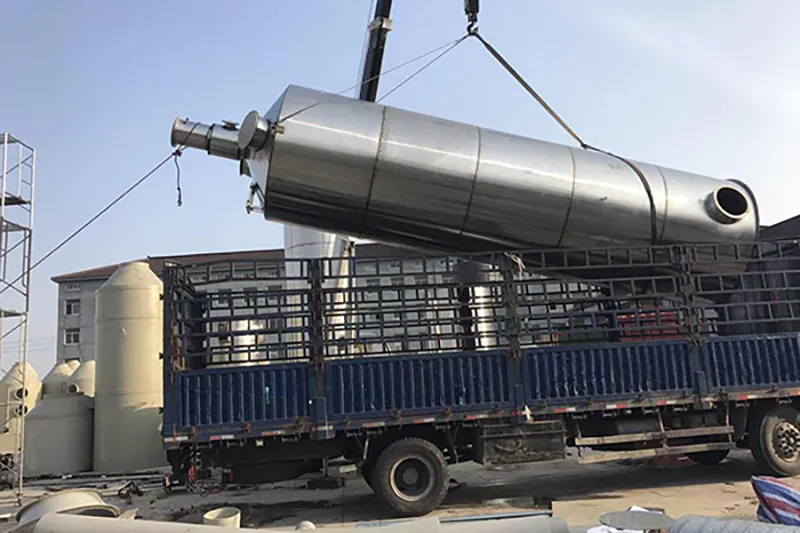Structure and principle of electric tar precipitator
2025-09-08

The electric tar catcher adopts three structural forms: concentric circle, tube, and honeycomb. Regardless of the structure, its working principle is to apply high-voltage direct current between the metal wire and the metal tube wall [or electrode plate] to maintain an electric field sufficient to ionize the gas, forming a corona zone between the anode and cathode.
Working mechanism:
The discharge process of gas: Under normal circumstances, gas is non-conductive, but under the action of a high-voltage electric field, the electrons inside the gas will gain enough energy to become free electrons and conduct electricity, which is called spontaneous ionization phenomenon. The spontaneous ionization of gases is established in a non-uniform electric field. In a uniform electric field, as the voltage increases, if ionization occurs at any point in between, the two poles will immediately be filled with charged ions, and the gas in the entire space will be broken down. At this point, the current rapidly increases, forming a spark discharge. In non-uniform electric fields, the electric field strength rapidly decreases as the distance between the two poles increases.
Choice in industry:
According to the polarity of the power supply, corona discharge can be divided into negative corona discharge and positive corona discharge. In industrial production, cathodic corona discharge is mostly used because under the same conditions, it can obtain higher current than anodic corona discharge, and its flashover voltage is also much higher than that of anodic corona discharge.
The main factors affecting the performance of electrostatic precipitators are:
Due to the many factors that affect the operational performance of electric tar precipitators, please inform us of the density, viscosity, specific resistance, gas temperature, pressure, humidity, flow rate, and impurity concentration of dust and droplets when selecting.

